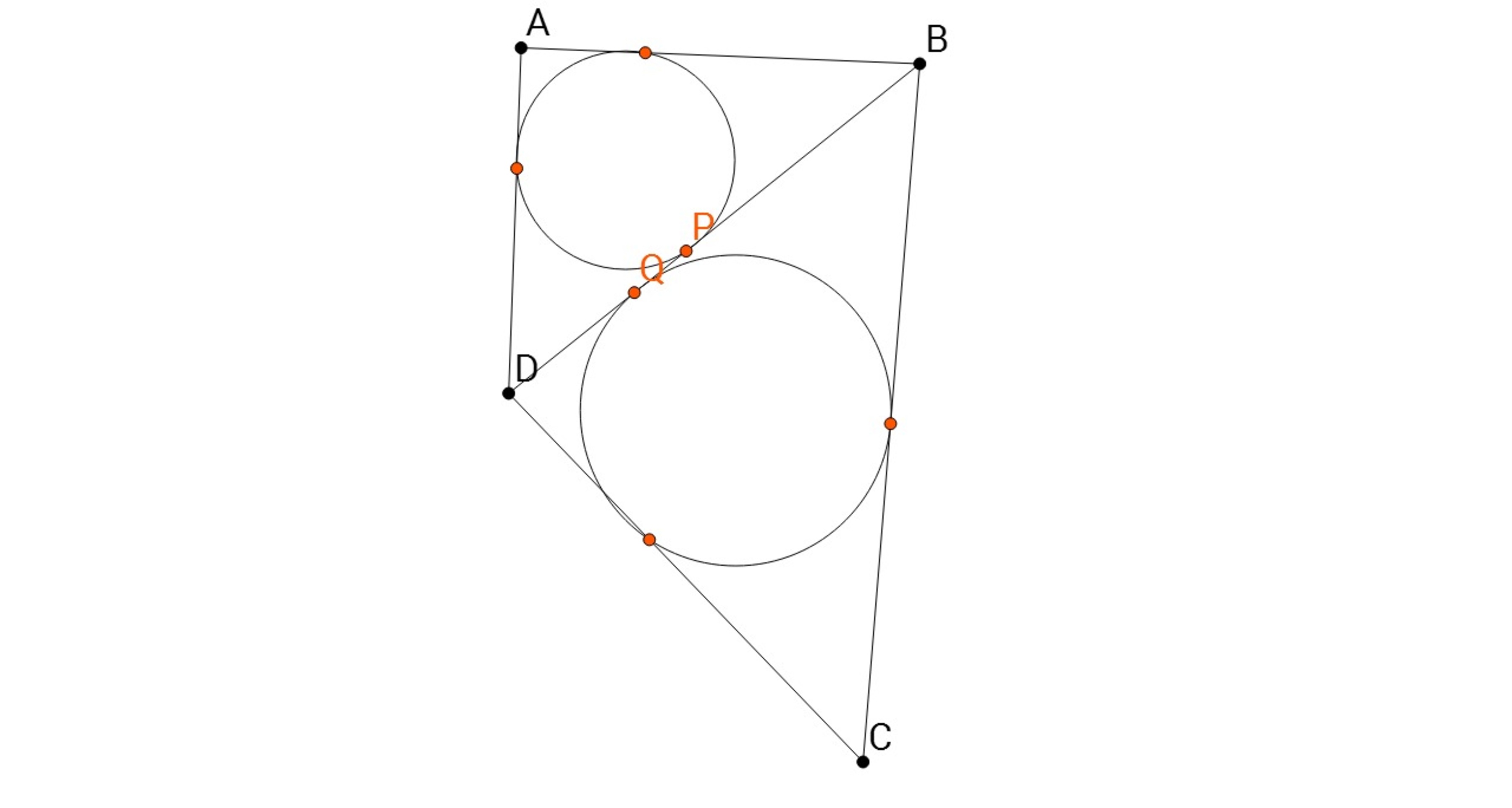First take reflection, then cyclic
In figure below,

is a convex quadrilateral with . Let the incircles of triangles and touch at and . If and , find the sum of the inradii of two in-circles.
The answer is 799.
This section requires Javascript.
You are seeing this because something didn't load right. We suggest you, (a) try
refreshing the page, (b) enabling javascript if it is disabled on your browser and,
finally, (c)
loading the
non-javascript version of this page
. We're sorry about the hassle.
If the right-angled triangle A B D has sides A B = x , A D = y = 9 9 9 and B D = x 2 + y 2 , then A B D has semiperimeter s = 2 1 ( x + y + x 2 + y 2 ) . The inradius r of this triangle is the distance from A to the point of tangency of the incircle with A D (or with A B ), and this is equal to r = s − B D = 2 1 ( x + y − x 2 + y 2 ) . But then the distance D P from D to P , the point of tangency of the incircle with B D , is D P = s − x = 2 1 ( y − x + x 2 + y 2 ) = y − r . On the other hand D Q , the distance from D to the point of tangency of the incircle of B D C with B D , is equal to the inradius R of the triangle B D C . Thus P Q = D P − D Q = y − r − R and hence r + R = y − P Q = A D − P Q = 7 9 9 .